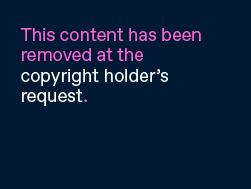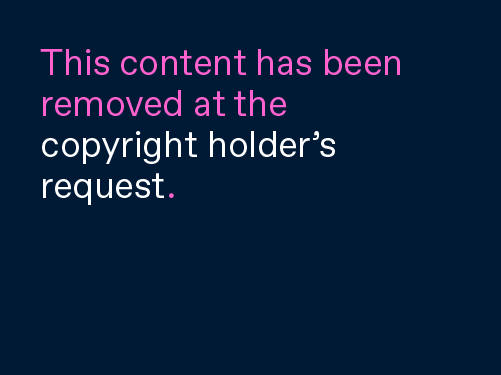
Okay, tetep ya gue naro foto-fotonya dulu, baru interview nya, baru ntar videonya, okay :)

Okay, so what's in? Yeah well, jadi lo ga perlu lah beli Forbes soalnya ini bukan edisi khusus Justin Bieber ROFL. Cuma Justin jadi covernya, gitu doang. Oh, and you should know, Justin ada di peringkat KETIGA dari daftar 100 artis versi majalah Forbes, setelah J-Lo dan Oprah. Oh iya, list ini diliat dari daftar kekayaan mereka :)
Anyway guys, again gue taro versi aslinya ya, versi bahasa inggris. gue ga mau dianggap mis-interpretation atau mis-translation alias salah ngartiin gitu kan kayak kasus yang dulu-dulu, males banget kan ya? Ntar gue kasih deh rangkumannya dibawah :)
“You’ve gotta hear this, it’s crazy,” gushes the singer. “It’s called ‘Die in Your Arms.’” A moment later his ubiquitous lilt surges full volume from the stadium-quality speakers, a soulful love song reminiscent of early Jackson 5. Next he plays “Happier When We’re Together,” a ballad in which he worries a girlfriend will be unfaithful while he’s on tour. Standing up as his own beatboxing merges seamlessly with a drum machine at the beginning of “You’re the One,” he does an impromptu variation of the Moonwalk.
Since his debut three years ago Bieber has sold 15 million albums, grossing $150 million on 157 tour dates across two dozen countries along the way. His biopic, Never Say Never, pulled in $30 million on its opening weekend, just shy of the concert-film record, and racked up $100 million at the box office in total. His fragrance, Someday, debuted last June and did $60 million in retail sales during its first six months on the market. Those income streams helped Bieber personally earn an estimated $55 million over the past 12 months and $108 million over the past two years.
Even more impressive than Bieber’s earning power: his vast social media reach, part of the reason he ranks third on this year’s Celebrity 100 list. Bieber boasts 21 million Twitter followers—more than any person on Earth not named Lady Gaga. His 43 million Facebook fans are more than Mitt Romney’s and Barack Obama’s put together. With 740 million views, his breakout ballad, “Baby,” is the most-watched video in YouTube history; if you assume three minutes per song, his VEVO channel’s 2.4 billion impressions are enough to provide one minute of video to every person on the planet.
Bieber’s tech savvy infuses more than his music—it’s also a core strategy for how the entertainer intends to translate all that fame and fast money into enduring riches. Instinctively, he embraces a Peter Lynch model of investing—“I’m not going to invest in something I don’t like; I have to believe in the product”—but rather than load up on buy-what-you-know value stocks, the singer has been quietly plowing millions into private tech startups. According to his manager, Bieber holds stakes in a dozen such companies. FORBES was able to verify four: messaging platform Tinychat, social-curation app Stamped, gaming outfit Sojo Studios and, most critically, Spotify, the disruptive music service founded by Daniel Ek and backed by everyone from Sean Parker to Li Ka-shing.
Bieber has come a long way in the finance department since I first broached the subject with him a bit over a year ago. “I have a business manager,” he told me at the 2011 Grammys. “That basically sums up the question.” Today that’s changed: “I do calls every week with my business manager and my lawyer,” he says. “Each week I’m learning something about my business and what I need to know for my career.”
“It was just crazy to me because I didn’t really think that it was possible,” Bieber says. “I lived in such a small town and things like that didn’t really happen.” Before Web 2.0 they probably never did. Yet there was Bieber, blowing away Braun and Usher in March 2008. The duo quickly signed him to their joint venture, Raymond Braun Media Group, and Braun became Bieber’s manager. By September they’d landed him a record deal with Universal Music Group’s Island Def Jam. His first single cracked the top 20 after its July 2009 release, and his debut EP, My World, catapulted him to mainstream fame that fall. In December President Obama invited him to sing at the White House, and he wowed a national audience with a performance on Dick Clark’s New Year’s Rockin’ Eve.
This cultural phenomenon, born of social media, took a modicum of fame and tossed it into the digital echo chamber. Bieber opened a Twitter account in June 2009 and by September had amassed 1 million followers. (In 2010 a Twitter employee said 3% of the company’s infrastructure was dedicated to handling Bieber-related tweets.) He was also an early adopter of Instagram, the photo-sharing service recently purchased by Facebook for $1 billion, and boasts 1.5 million followers there, more than any other user (his girlfriend, singer/actress Selena Gomez, ranks third with 1.4 million).
“It used to be there was a mystery to the artist,” says Bieber. “Now there’s, like, no mystery—the fans want the connection, they want to see you Instagramming at a coffee shop in the morning.”
With such social media dexterity Bieber has built himself a formidable platform. The 30-year-old Braun’s challenge: sustaining the phenomenon. In many ways Bieber and Braun are the most intriguing talent-manager combo since Elvis and Colonel Tom Parker. Both managers wielded the influence that comes from discovering their charges young, and both faced the challenge of moving them past the fickle market of hysterical, screaming teenage girls.
But whereas Parker took any deal he could and up to 50% of the action to make sure his once-in-a-lifetime meal ticket turned into a decades-long feast, Braun is more judicious. His deal with Bieber is closer to the standard 15%; he thinks long-term success requires selectivity, not ubiquity, and aligning all deals with Bieber’s brand. “I don’t let him get involved in anything unless he likes it,” he says. Turning Bieber into the world’s most unconventional venture capitalist is simply a sophisticated manifestation of that philosophy.
Braun first came up with the idea of getting Bieber to invest in startups three years ago. Just as Diddy partnered with Ciroc and Jay-Z launched a Reebok sneaker line, it made sense for Bieber to directly benefit from something he could promote to his core audience. But teenagers aren’t allowed to buy vodka, and they generally don’t have the disposable income necessary to buy $150 shoes. What they do consume in nearly unlimited quantities, however, is social media.
“I said, ‘This is a space where you can move the needle and you can actually be a part of something that’s more than just your money working,’” Braun recalls. “‘You worked hard to get to this point, and these [startups] are benefiting over what you’re doing. … You should be a part of that process.’” Adds Bieber: “Social media helped launch my career. Without the Internet and without YouTube, I wouldn’t have gotten the chance to put my music out there and have people hear it.”
Bieber’s first investment came in 2009, and though he won’t reveal that company’s name, he’s been on a venture capital roll ever since. Last January he and Braun joined a $1.5 million financing round for Tinychat, along with A-Grade (the investment fund run by actor Ashton Kutcher, billionaire Ron Burkle and Guy Oseary, Madonna’s manager). In May Bieber joined Google Ventures and Bain Capital to invest in Stamped, an app that allows users to rate everything from restaurants to music. Spotify was the big one, as founder Daniel Ek recruited a handful of recording artists to buy in while seeking industry credibility ahead of his company’s U.S. launch last year. Next up: Viddy, a video-sharing app with an Instagram-like interface.
“Scooter has a team that helps find investments,” says Bieber. “Usually we work together. If I find something, I bring it to the table.”
In the latter camp, Ellen DeGeneres turned Bieber on to social gaming company Sojo Studios, and he soon joined her as an investor. One of his favorite products: a FarmVille-esque Facebook game called WeTopia, where players collect virtual points that can be redeemed as donations to real charities. Neither Bieber nor his manager will reveal any other startups he’s backed, but Braun says they’re all still in business.
In a typical Bieber deal he’ll put in about $250,000 at the favorable pricing generally reserved for smart money—the kind of strategic partners that help a company long term. Braun won’t disclose the size of Bieber’s portfolio but says it’s between 2% and 5% of the singer’s net worth. FORBES puts Bieber’s fortune at about $80 million, which translates to somewhere in the ballpark of $3 million in venture investments.
There will surely be more loot to put to work. This fall Bieber embarks on a yearlong tour, hitting every continent but Antarctica; promoter AEG Live has guaranteed him $80 million for 125 concerts. Anyone who sees Bieber as a fad should take note of that deal. “He’s not just an American domestic phenomenon, he’s a worldwide phenomenon,” says Randy Phillips, AEG’s chief.
On the tour Bieber will be showcasing the more grown-up fare of Believe—a crucial step as he tries to transition from teen idol to adult icon. “It’s not really a transition, it’s just opening doors,” he insists. “I’m trying to make music that’s a little bit more mature and that can appeal to all ages, and I’m not trying to lose my younger fans.”
Some compare this blueprint with that of another Justin—Timberlake, a crossover former boy-band star with venture capitalist proclivities. Similarly Bieber is taking acting more seriously, planning to costar with Mark Wahlberg in a basketball flick next year. But Bieber maintains there’s only one role model: Michael Jackson, who converted child stardom to icon status. Inspired by the King of Pop’s largesse, he says he includes a charitable component in every deal. “People were fine with buying 20 CDs from Michael Jackson because he went and did good things.”
Okay, so yeah, itu isi dari majalah Forbes nya. Yaah, beberapa bagian sih gue cut, kayak bagian paling akhir soal hubungan Justin sama AEG yang dulu ngurusin semua konser Michael Jackson. And well, gue bakal ngerangkum semua isinya ya
So yeah, itu dari awal soal gimana penghasilan Justin, dari album pertama, kedua, parfum nya, dan semua penghasilan yang diperolehnya. Udah gitu sih soal Justin yang ngeinvestasiin uangnya ke beberapa perusahaan gede, salah satunya Tiny Chat, dan juga Soju Game yang bikin WeTopia, game di facebook yang bisa nolong orang dan charity dalam real life. Ini sih karna dia diajak sama Ellen. Dijelasin juga Justin sama Scooter bekerja sama gitu, dan well yeah, hubungan dia dan Scooter itu jauh daripada artis dan manager lainnya. Mereka berdua juga suka diskusi banyak hal, termasuk bisnis. Ditambah tahun ini Justin sering banget ditelpon pengacaranya buat masalah bisnisnya dan segala macamnya, walaupun dia dari dulu punya manager keuangan.
Oh, dan yang mesti lo garis bawahi, tahun ini konser Justin diurus sama AEG, yang dulu ngurus konser Justin, yang sudah memastikan kalo Justin bakal ngadain konser buat BELIEVE sebanyak 125 KONSER alias 125 PERFORMANCE, dan dipastikan bakal dapet lebih kurang $80million alias 80 juta US Dollar, alias lo kaliin sekitar 9.500 kalo dirupiahin alias BANYAK BANGET MEEN!!!
Oke oke, daripada lo puyeng kan ya mikirin duit si Justin yang banyaknya kebangetan itu, mending lo nonton video aja deh nih behind the scene photoshoot Justin buat Forbes.
xoxoxo
~ Ribka ~
Tidak ada komentar:
Posting Komentar